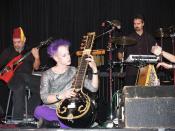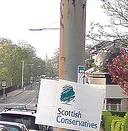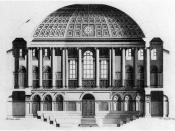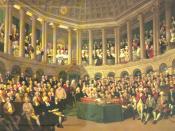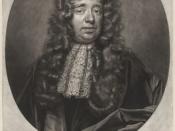Eighteenth century Ireland was ruled by only a tiny fraction of the countryÃÂs population. This essay will look into the structures by which this minority governed. It will show how people came to reside in positions of power and how they put it to use to facilitate the needs of their country.
The Irish Parliament was subsidiary to the English parliament. It was restricted on account of Poynings law. All legislation proposed by parliament had to be approved by the King before it could become law. Parliament members felt a sense of anger and frustration at the restrictions placed on their international trade and parliament by Britain, whom were always insisting on controlling. The Irish Parliament consisted wholly of Protestants. In 1961 the English House of Commons and Lords passed an act declaring against Catholic doctrines. If a Catholic was to enter parliament they would have to take an oath declaring the Papacy null and void.
No Catholic would consider taking such an oath against their beliefs and so, were exempt from parliament. This was just one of the many anti-popery acts that were declared against the Catholic population. There was a strong sense of anti-Catholicism in parliament.
The Prominence of the Irish Parliament began in 1692. They met again in 1695#. War with France until 1697 and again from 1702 until 1713 helped to initiate regular parliament sessions. The English Government announced that Ireland should house and support a potion of the peacetime standing army. This could only be paid for by additional duties on alcohol, tobacco and other goods. However this had to be voted for by parliament. The Parliament of 1695 granted the funds but only for a period of two years. This ensured the parliament would have to meet again in two years to discuss funds. It became standard practice for the parliament to meet every two years from 1715. Between 1692 and 1800 the parliament was at its most active. Government control was rarely challenged and when it was, it was rarer that it would be successful.# The Lord Lieutenant was appointed by the government in London and was not allowed to live in Ireland. He could only reside when parliament was in session 6-8 months every two years. There was a fear that he would set up a power position himself. Without local knowledge he would be unable to rule. Upon his absence the running of the country was left up to three people known as the Lord Justices. The lord Justices had the responsibility of keeping local law and order. They also looked after the collecting of taxes and were eventually given the right to hand out office privileges to whomever they wished in order to get them to join government side.
Before 1767 the viceroy (now referred to lord lieutenant) and chief secretary were usually non resident. ÃÂUndertakers acted as a channel of communication between the Parliament and Dublin Castle.ÃÂ# In the absence of the viceroy an undertaker assumed position of one of the Lord Justices. These undertakers had to be chosen wisely and patronage alone would not be enough. Candidate needed a good reputation for political judgement, honour and a certain independence from administration of the day.
There was a substantial division in parliament between two rival parties. Sole Right Men (ÃÂMy lord Capels FriendsÃÂ) known as Whigs and the followers of Lord Chancellor, Sir Charles Potter known as Tories. The Whigs supported full religious and political toleration for Protestant dissenters and an aggressive foreign Policy to contain the threat of France. They were also enthusiastic supporters of the principles of the revolution and had a Presbyterian base. Alan and Thomas Broderick, English settlers from Cork were important figures amongst the Whigs. Tories on the other hand sought to uphold the exclusive claims of the Church of England, they opposed involvement in European power struggles and regarded the removal of James II as a necessity. # Irish Tories were to Queen Anne and devoted to the Church. They showed hostility towards protestants whom were not members of the Church of Ireland. They were disliked by Presbyterians but their lenience towards Catholics gained them their support. However, although ÃÂTories did not add any new Penal Laws to Catholics, they were not tolerant of them and in 1712 launched a nationwide drive against un-registered and non-juring priests.ÃÂ#The most distinguished Tory was James Butler, the 2nd Duke of Ormond. Kilkenny Castle was his headquarters and with a huge network of family, he had many Allies. He faced opposition such as the Brodericks but made deals with them to keep peace.
In the time of Queen AnneÃÂs reign the Tories were the stronger party and held the majority of higher offices. However Queen Anne was now middle aged and childless, leaving no successor to the throne. Without an heir, the throne would go to cousins in Hanover. This is upsetting for Tories and from 1710-1713 quarrelling between them and the Whigs intensifies. The Tories in England pushed an election in Ireland to bring the Tories into dominance. There was much violence associated with the election and when it took place in 1713 sheriffs were chosen in each county and they decided what votes counted. Despite the Tories violent and forceful approach the Whigs managed to hold their seats in parliament much better. They organised themselves into blocks of voters and were always present at parliament.
Upon the death of Queen Anne, George 1st of Hanover takes over the throne. Being a Whig he dismissed all Tory ministers. Tories in both Ireland and England are dismissed from office and replaced by Whigs. Many Tories are arrested and placed in prison. The Changeover to Hanover made little difference to Irish Catholics, there was no difference in trade and there was no sign of the restrictions made against Catholics being removed. By 1717 the Whigs were firmly in power. Broderick was now known as Lord Middelton.# The House of Commons was now much easier to manage on account of everyone being a Whig.
Patronage ruled Ireland at this time, People and offices could be bought if the right price was paid. When government wanted something all they needed to do was to hand out patronage to Conolly or Broderick and it would be granted. The Government found Conolly easier to deal with as he was loyal and friendly towards administration, and so, much to Brodericks dismay, received more of the Patronage. Broderick decided he would obstruct parliament by agreeing with the opposition and then wait to be bought off when the government realised they couldnÃÂt rule without him.
Even though the Irish parliament was powerful, it was always under the thumb of the King. To the King, the Irish parliament would always be inferior to the English Parliament. The Irish Parliament had to go through the King befor any legislation could be passed. Even then, it could be altered and even completely changed before it was sent back as a bill. It would then be voted on and once the majority agreed it would be made law by the king. ÃÂThe Parliament so constituted, have a negative upon any law that the council shall offer the king, and which the King and his council in England shall under the Great Seal remit to the said parliamentÃÂ# Sir William Petty: ÃÂOf the Government of IrelandÃÂ(Word Count: 1250)Bibliography:Connolly, S.J., Political Ideas in Eighteenth Century Ireland (Dublin 2000)Connolly, S.J., Religion, Law and Power: The making of Protestant Ireland, 1660-1760 (Oxford 1992)Leighton, C.D.A., Catholicism in a protestant Kingdom, A study of Irish Ancient Regime (Dublin 1994)Magennis, E., The Irish Political System, 1740-1765 (Dublin 2000)Petty, W. Sir., The Political Anatomy of Ireland (Shannon 1970)
